Google Glass Goes back To planning stage
the new York instances, Friday, February 6, 2015
in the wake of its outrageous Glass debacle, Google is going back to the drawing board and tackling wearable technology as if for the primary time. nonetheless named Glass — as a minimum for the moment — the reboot is being led by using jewelry designer Ivy Ross, and Tony Fadell, who’s best be aware of as the creator of Nest. “several folks with data of Mr. Fadell’s plans for Glass said he used to be going to revamp the product from scratch and would not unencumber it unless it used to be full,” the new York times reports.
the whole story at the ny occasions »
this can be a story that includes a lot of public intrigue, a futuristic wearable technology, a secret laboratory, fashion models, sky divers and an interoffice love triangle that ended a billionaire’s marriage. this is the story of Google Glass.
prior to we start, this is the phase within the tale where I must more than likely provide an explanation for what Google Glass is. except for, I don’t must. Google Glass didn’t just trickle out into the world. instead, it exploded with the kind of fuss and pageantry usually reserved for an Apple iSomething.
From its unveiling in 2012, it was regarded as the system, yearned after with the aid of everybody from nerds and chief executives, to cooks and fashionistas. It was the should-have toy that used to be going to set the gold standard for a brand new classification of wearable computer systems.
Time journal named it one of the “best innovations of the yr.” It received its own 12-page spread in Vogue journal. “The Simpsons” committed a convey to Google Glass, although Homer referred to as them “Oogle Goggles.” Glass did the rounds on the morning and evening displays, and it was once the topic of a large number of comedy skits including on “Saturday night are living,” “The Colbert document” and countless YouTube videos. Presidents from world wide tested them. Prince Charles wore a pair. As did Oprah, Beyoncé, Jennifer Lawrence and invoice Murray.
There was once also the moment at big apple fashion Week in 2012, when Diane von Furstenberg sported a red pair, and despatched her models down the runway with totally different-coloured ones. Later, in a slickly produced video, Ms. von Furstenberg (sporting a brand new pair produced with the aid of DVF advised Isabelle Olsson, a Google dressmaker, “We published Google Glass to the sector.”
And in any other signal of its cultural import, the brand new Yorker ran a 5,000-word feature on what it was once wish to put on the unconventional tool, written by means of a so-referred to as Google Glass Explorer invited with the aid of Google to test the product. here, Gary Shteyngart comically recounts an impromptu product demonstration he gave on the 6 teach. “Are these them?” one businessman asked him. “that is so dope,” a college scholar says. “You’re fortunate.”
but perhaps the most important splash came about remaining week when, out of nowhere, Google introduced that tumbler, as we understand it, was once going away.
Poof! gone. All that fanfare for nothing.
in keeping with a half-dozen present and former Google workers who were concerned with Google Glass, this wasn’t how the story was supposed to end. however the introduction of Glass — and the hoopla that accompanied it — used to be also not how the story was supposed to start, both.

To take into account what went mistaken, we need to trip back just a few years to Mountain View, Calif., deep throughout the graceful workplaces of Google. There, amid the colorful campus logos and swaying sycamore timber, the company’s founders and a handful of relied on executives got here up with a listing of 100 futuristic concepts.
These incorporated indoor GPS and a challenge known as the Google brain. but the pleasure was reserved for a new style of wearable computer systems that could be attached to pores and skin or, probably, worn like glasses.
by using late 2009, Eric Schmidt, then Google’s chief executive, approached Sebastian Thrun, a genius jack-of-many-trades researcher at Stanford university, and recruited him to build out these ideas. Mr. Thrun, urged to provide you with a fab identify, quickly referred to as the lab “Google X,” hoping to decide on one thing better later.
in keeping with a number of Google team of workers contributors who worked on the early degrees of the X venture (all of whom would talk about the mission simplest with the promise of anonymity, both as a result of they persevered to work for the company or because they still had trade relationships with it), the lab soon discovered a covert house on the Google Campus, taking over the 2d floor of a nondescript constructing at 1489 Charleston Avenue. There, the lab’s first undertaking was once born: a sort of digital-reality-sort thing that would later become known as Google Glass.
Mr. Thrun recruited a slew of rock-famous person scientists and researchers to work on Glass, together with Astro Teller and Babak Parviz, both at the forefront of wearable computing, and Ms. Olsson, the dressmaker. earlier than long, Sergey Brin, Google’s co-founder, joined to lend a hand run X.
It’s necessary to notice two issues about Mr. Brin right here. at the time, he was married to Anne Wojcicki, a genetic-trying out entrepreneur and the mummy of their two kids. 2d, he had a popularity at Google for having what has been widely quoted as “mission attention deficit dysfunction,” becoming obsessive about one venture after which sauntering off to the following. (Mr. Brin declined to remark for this article.)
With Mr. Brin and Mr. Thrun on the helm, Google X and the glasses challenge managed to remain underneath wraps for greater than a year. “on a regular basis Google staff would walk through and don’t know what used to be occurring inside X,” one Google X worker mentioned.

That was once, except 2011 when my colleague Claire Cain Miller and that i broke the information concerning the secret Google X Lab, which detailed one of the most projects within the works at X.
on the time, unknown to anyone outdoor X, an impassioned split was forming between X engineers about essentially the most general features of Google Glass. One faction argued that it will have to be worn all day, like a “trendy instrument,” while others idea it will have to be worn only for specific utilitarian capabilities. still, virtually everybody at X was once in settlement that the present prototype was once simply that: a prototype, with major kinks to be worked out.
There used to be one awesome dissenter. Mr. Brin knew Google Glass wasn’t a finished product and that it needed work, but he needed that to take place in public, now not in a high-secret lab. Mr. Brin argued that X should release Glass to customers and use their comments to iterate and improve the design.
To toughen that glass was once a piece in growth, Google determined not to sell the primary version in retail shops, but instead limit it to Glass Explorers, a make a choice workforce of geeks and journalists who paid $1,500 for the privilege of being an early adopter.
The technique backfired. The exclusivity brought to the extraordinary hobby, with media outlets clamoring for their very own piece of the story. As public excitement detonated, Google no longer most effective fanned the flames, but doused them with jet fuel.
“The staff within Google X knew the product wasn’t even close to prepared for top time,” a former Google worker stated. The Google marketing team and Mr. Brin had other plans.
At a Google builders conference in June 2012, as an example, Glass-sporting sky divers landed on prime of the auditorium, raced across the roof on bikes and into the convention corridor to thunderous applause. (I used to be there and it was not like any demo I had ever viewed.) Mr. Brin seemed to revel within the consideration and used to be labeled a real-life Tony Stark, from the Iron Man comics. Later that year, Mr. Brin would sit entrance row at Ms. von Furstenberg’s exhibit, proudly accessorized with a pair of Glass.

recent comments
This wasn’t how Glass used to be presupposed to be offered. This wasn’t the quiet test that Google X engineers had hoped for as they tinkered away. It used to be like watching someone whisper a secret with a bullhorn.
however sky divers and models can simplest accomplish that so much, and the shine started to put on off. Tech reviewers who eventually bought their fingers on Glass described it as “the worst fabricated from all time,” aptly noting that it had abysmal battery lifestyles, and that it was once “a product stricken by bugs.” privateness concerns have been raised, with folks fearful of being recorded all through non-public moments, like at the urinal, as I skilled at some other Google conference where I used to be surrounded by way of Glass wearers. It used to be additionally banned from bars, film theaters, Las Vegas casinos and other locations that didn’t need customers surreptitiously recording.
Glass went from being coveted to changing into a punch line. There was a Tumblr web site known as White men wearing Google Glass.
Then, in early 2014, a tabloid-useful scandal hit the Google X labs. Amid the 3-D printers and microchips, a love affair had developed between Mr. Brin and Amanda Rosenberg, a advertising and marketing supervisor on Google Glass who had helped organize the Diane von Furstenberg type exhibit. Mr. Brin was leaving his spouse for Ms. Rosenberg, who was in flip leaving her boyfriend, who also labored at Google. In an even stranger twist pronounced in vanity truthful, it grew to become out Mr. Brin’s spouse had been chums with Ms. Rosenberg.
From there, Google Glass seemed to wither away. Early X staff left, together with Mr. Parviz, who decamped to Amazon. Mr. Brin, who was once dealing with the fallout of his affair at Google, stopped carrying Glass in public, too.
And that’s how we arrive at last month, when Google all of a sudden introduced that it was shuttering its Glass Explorer program. It has mostly been suggested as the dying knell for Glass. however possibly it isn’t.
In its new existence, Glass is overseen by way of Ivy Ross, a jewellery fashion designer who runs Google’s sensible-eyewear division, and Tony Fadell, a former Apple product executive and the creator of Nest.
“Early Glass efforts have broken ground and allowed us to learn what’s vital to consumers and enterprises alike,” Mr. Fadell stated in a remark. “I’m excited to be working with Ivy to provide course and give a boost to as she leads the staff and we work collectively to integrate these learnings into future merchandise.”
several people with data of Mr. Fadell’s plans for Glass said he was going to redesign the product from scratch and would no longer free up it except it was full. “There might be no public experimentation,” one adviser to Mr. Fadell mentioned. “Tony is a product man and he’s not going to free up something unless it’s perfect.”
As for Ms. von Furstenberg, she has no regrets. In an interview Tuesday, she stated that Google Glass used to be nothing in need of progressive. “This used to be the primary time that individuals talked about wearable expertise,” she mentioned. “technology moves on faster and faster, and Google Glass will always be part of historical past.”
(406)

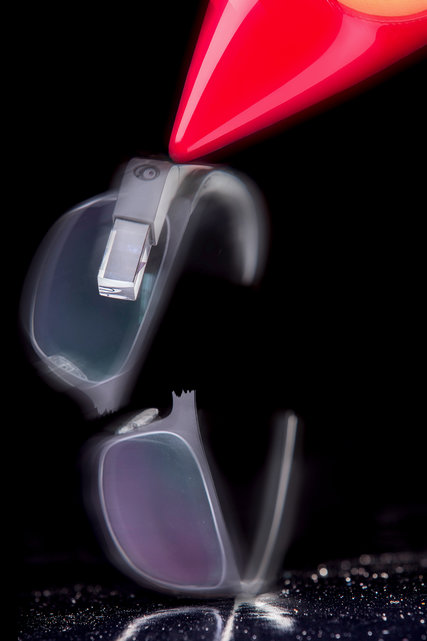
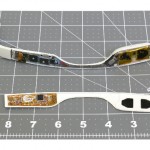

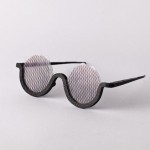

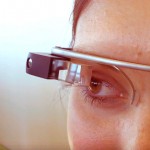
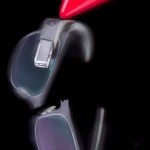
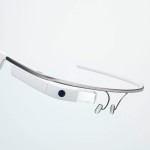
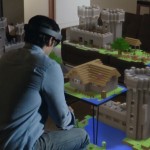
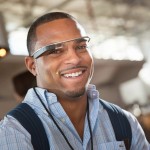
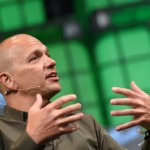
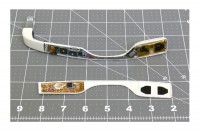

sergio
the day past
You by no means come to market with an unfinished product. that is what has made Apple so a success this decade. When an Apple product involves…
anyone
the day prior to this
as an alternative of continuous to work on this dog of a privateness-shredding ego commute, Google must use its huge outlets of filthy lucre to fund the…
ivyb
yesterday
no longer sure why there are such a large amount of nay-sayers. As an early “expertise wearer” myself, (listening to aids, to be exact), I applaud the use of Glass….